-
The Workers &
Social Change"Manpower" (1943). This government film provides an overview of how the workforce changed during the war: from resulting geographical migrations to the widespread training of unskilled workers to the inclusion of youth, the retired, and the disabled into the labor pool. -
William Knudsen observed that "progress in the world is made by average people." That statement was brought to life on the factory floors during WWII's accelerated production efforts.
By 1944, unemployment had fallen to an astonishingly low 1.2 percent, union membership grew by nearly 5 million workers, and overtime pay resulted in a 70% increase in average weekly earnings. Eventually the growing, changing workforce gave rise to the Civil Rights Movement. -
Female industrial workers, including those working with General Motors and Higgins Industries, share their experiences on the Home Front during WWII.
-
Though women were in the workforce before the war, during WWII, more than 6 million of them engaged in industrial work. Though many of those female employees were forced to leave their jobs when men returned to the Home Front, millions continued to work outside the home after the war ended.
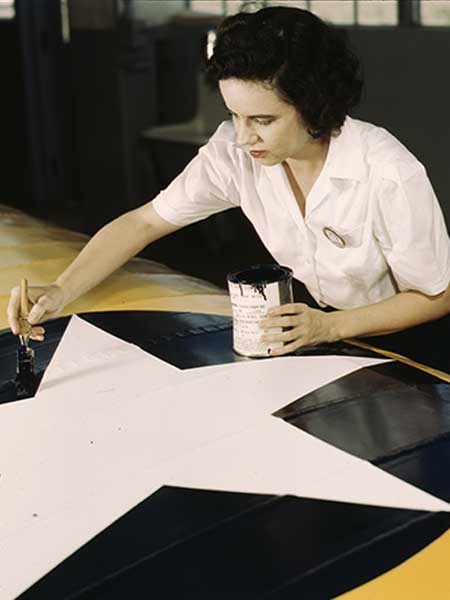 Miss Grace Weaver, a civil service worker, paints the American insignia on repaired Navy plane wings at the Naval Air Base in Corpus Christi, Texas, August 1942. Courtesy of Library of Congress.
Miss Grace Weaver, a civil service worker, paints the American insignia on repaired Navy plane wings at the Naval Air Base in Corpus Christi, Texas, August 1942. Courtesy of Library of Congress.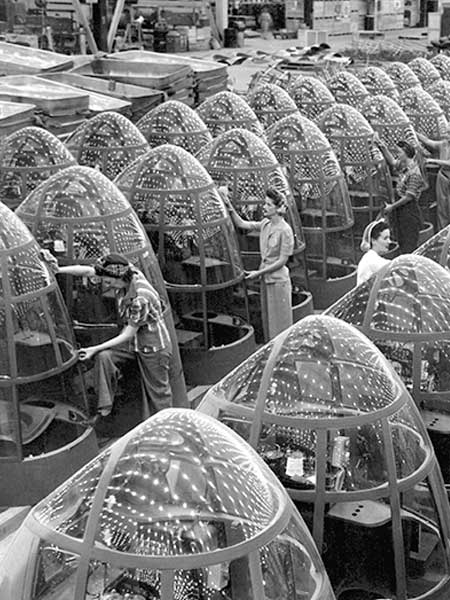 Women at work in the Douglas Aircraft Factory, Long Beach, California. Courtesy of National Archives.
Women at work in the Douglas Aircraft Factory, Long Beach, California. Courtesy of National Archives.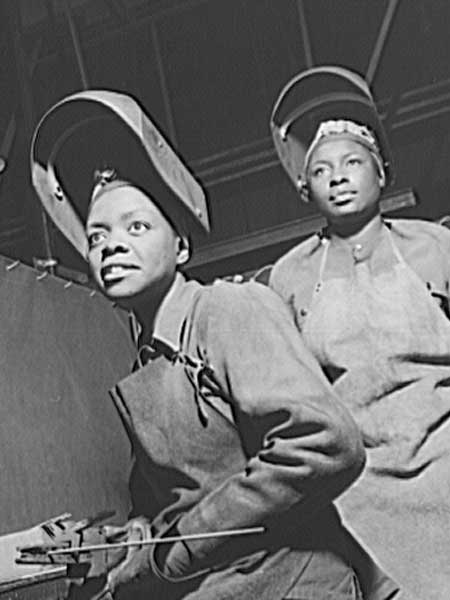 Women welders at the Landers, Frary, and Clark plant, New Britain, Connecticut. Courtesy of Library of Congress.
Women welders at the Landers, Frary, and Clark plant, New Britain, Connecticut. Courtesy of Library of Congress.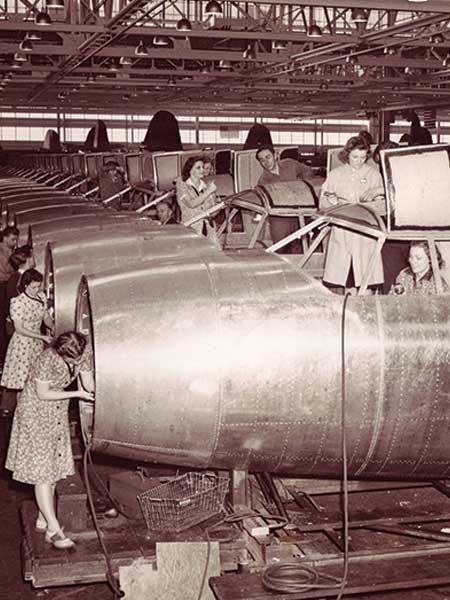 At the Glen L. Martin Plant in Baltimore, Maryland, women work alongside men to assemble B-26 Marauder Bombers. Courtesy of National Archives.
At the Glen L. Martin Plant in Baltimore, Maryland, women work alongside men to assemble B-26 Marauder Bombers. Courtesy of National Archives.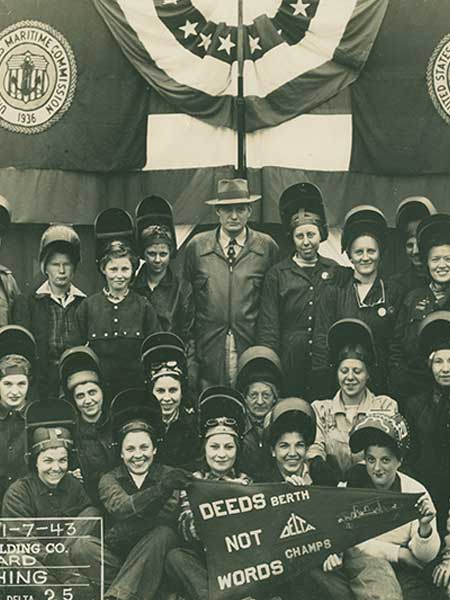 Delta Shipbuilding Company champion welders, New Orleans, January 1943. Courtesy of Mildred Aupied.
Delta Shipbuilding Company champion welders, New Orleans, January 1943. Courtesy of Mildred Aupied. -
"Women on the Warpath" (1943). Ford produced this video highlighting women building B-24s at the Willow Run factory, one of the first factories built expressly for wartime airplane production.
-
On June 25, 1941, Roosevelt signed Executive Order 8802, which prohibited racial discrimination in hiring for defense work. This introduced opportunities for training and better pay for African Americans. The influx of workers of every stripe into US industrial centers created crowded cities. In Detroit, racial tensions came to a head in the deadly riots of 1943.
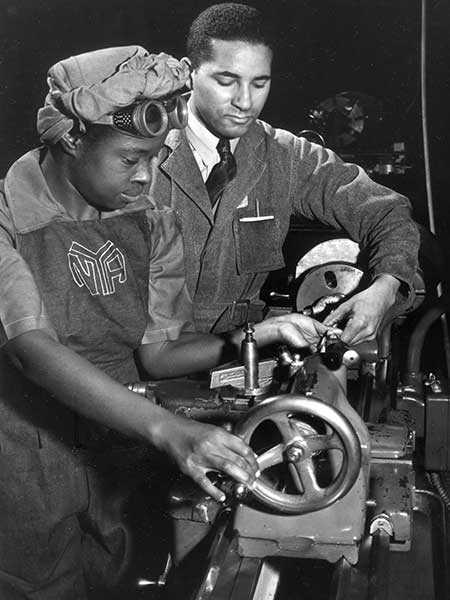 Juanita E. Gray, a former domestic worker, learns to operate a lathe at the Washington, DC, National Youth Administration training center. Courtesy of National Archives.
Juanita E. Gray, a former domestic worker, learns to operate a lathe at the Washington, DC, National Youth Administration training center. Courtesy of National Archives.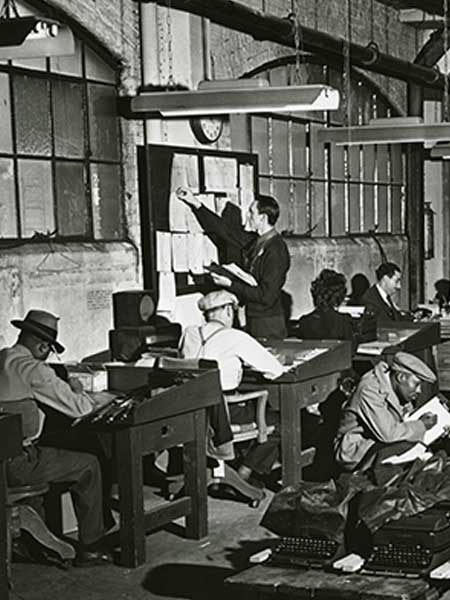 Black and white employees work side by side, Chicago Signal Depot Maintenance Division, February 1944. Gift in Memory of Clifford G. Kowalski, 2012.114.004.
Black and white employees work side by side, Chicago Signal Depot Maintenance Division, February 1944. Gift in Memory of Clifford G. Kowalski, 2012.114.004.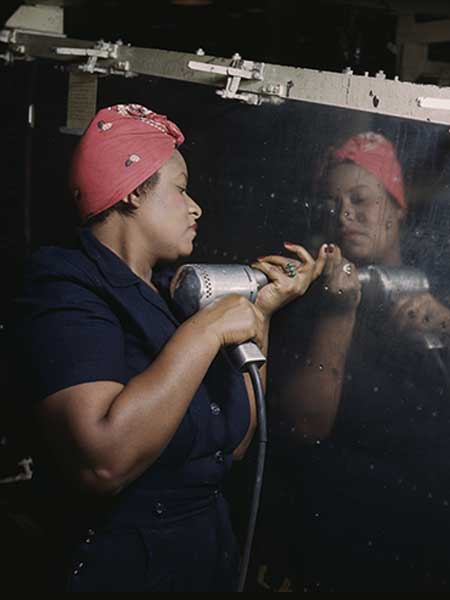 A riveter works on a Vultee A-31 "Vengeance" dive bomber at Vultee-Nashville in Nashville, Tennessee, February 1943. Courtesy Library of Congress.
A riveter works on a Vultee A-31 "Vengeance" dive bomber at Vultee-Nashville in Nashville, Tennessee, February 1943. Courtesy Library of Congress.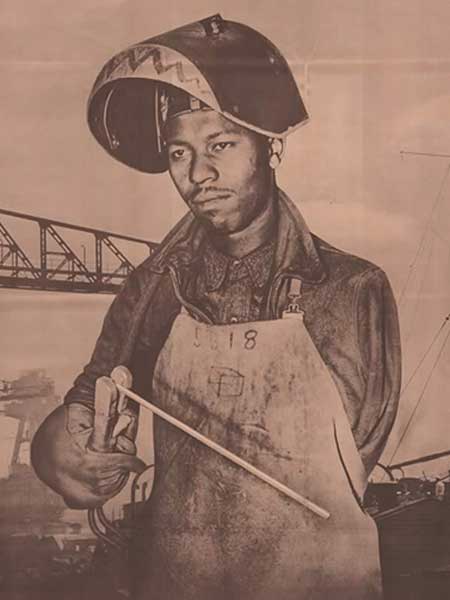 This 1943 propaganda poster shows an ex-soldier working on the Home Front. Posters like this were displayed in African American communities across the US. Although the realities and opportunities were different from these idealized images, the posters were an effective recruitment tool. Gift of Anne and Jack Kelsey, 2013.077.122.
This 1943 propaganda poster shows an ex-soldier working on the Home Front. Posters like this were displayed in African American communities across the US. Although the realities and opportunities were different from these idealized images, the posters were an effective recruitment tool. Gift of Anne and Jack Kelsey, 2013.077.122. -
Though they found work, widespread discrimination still affected minorities on the battlefields and in the factories.
Because of the burgeoning need for skilled labor during WWII, racial inequality in education and other aspects of life on the Home Front came to light while trying to recruit a labor force for industry, laying the groundwork for the Civil Rights Movement.
-
Share on Facebook
-
Share on Twitter
Tweet -
Share on Tumblr